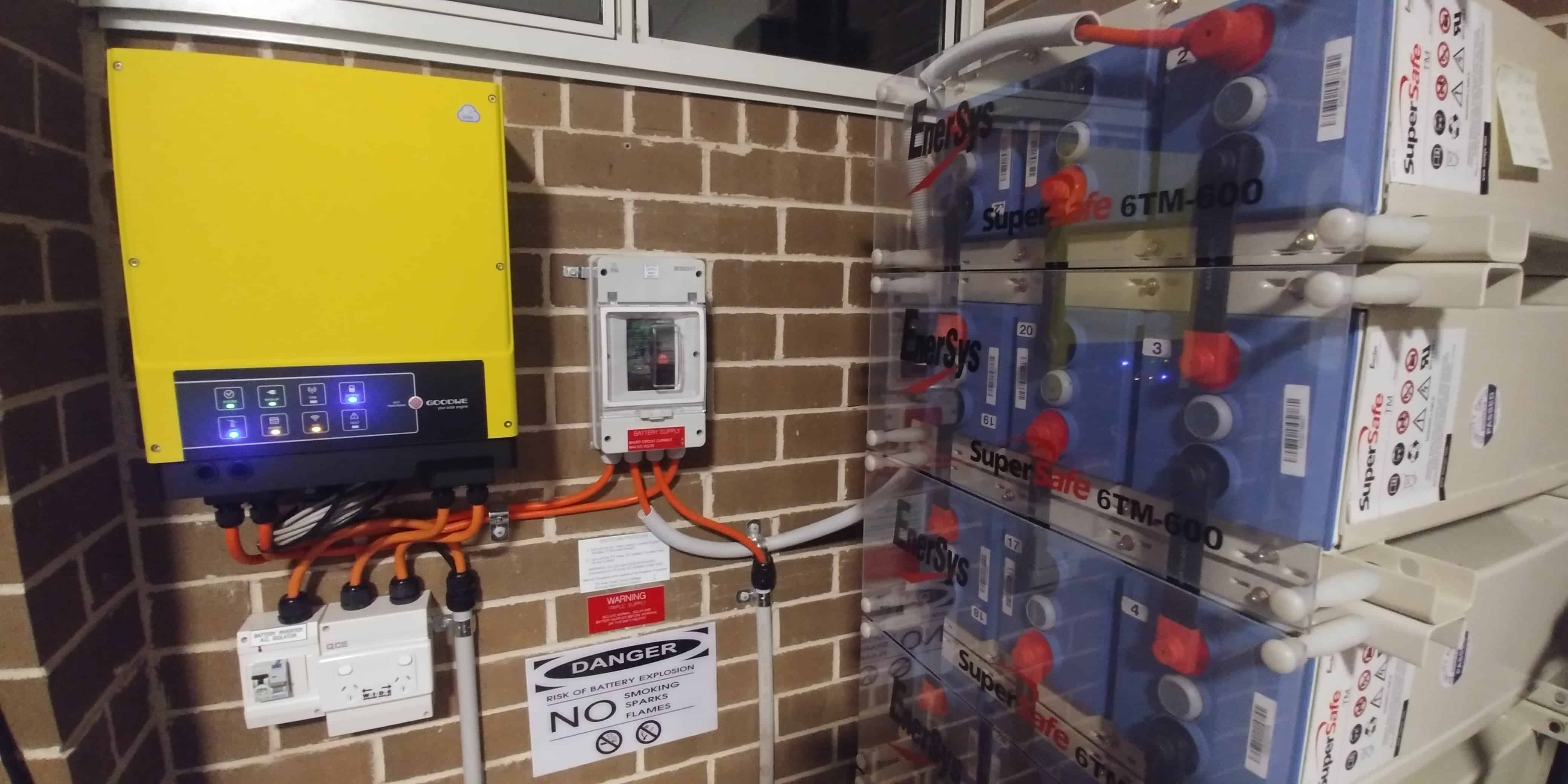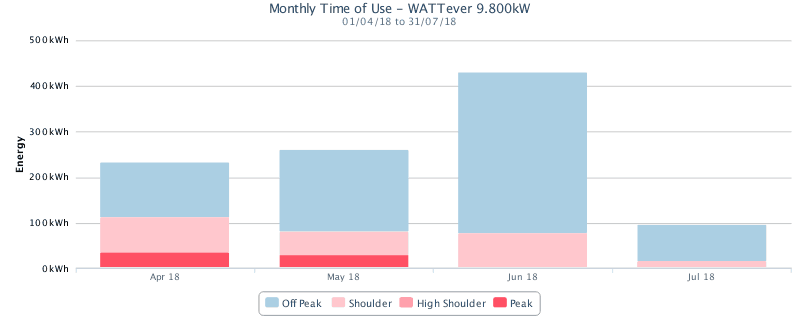Like many solar owners, I’ve been watching with great interest as more energy storage products become available in Australia. The introduction of all-in-one energy storage systems and hybrid inverters have helped bring prices down for households looking to add energy storage. But batteries aren’t yet cheap. Plus, if you are an existing solar owner, the options for retro-fitting storage to your set up is another expense again. So when a good friend told me that a local technology business was offering to give away some used lead acid AGM batteries “to a good home” I thought why not? This was a good opportunity to pull my sleeves up and see whether the economics would stack up if the biggest cost of energy storage – the battery – was removed. So I researched the batteries (Enersys 24 x 2V cells) and then went looking for a suitable battery inverter to retrofit to my existing SMA three-phase solar inverter.


Putting it all together
I quickly discovered that there are many challenges to getting a suitable storage inverter including:- support for my three phase home (most homes are single phase)
- good charging and discharge rates (to fill the battery quickly and cover higher powered loads respectively)
- support for low voltage batteries (both lead acid and lithium for upgradeability)
- compatible with Reposit Power (to gain income from demand response programs aka DRM)
- low cost
- a three phase energy meter to accurately monitor net import/export across all three phases
- 75A charging and 75A discharging (3.6kW)
- battery backup feature
- support for LV batteries both lead acid and a range of lithium batteries
- retail price of ~$1500
The system will save $500 per year with a 6 year payback period!
With the research done it was time to collect the batteries. We split the cost of hiring a small van between us, and in an afternoon we’d moved over two tonnes of batteries around the suburbs – and into our garages. There was no need to visit the gym on that day! I then had the storage system connected by a qualified solar installer. The total cost was a little over $3000 including the battery inverter, all cabling and labour. I also had the installer add a double powerpoint to provide a low-cost emergency battery backup solution rather than rewiring specific circuits in my house. Given the high reliability of the electricity supply to our Sydney suburban home – rewiring the house to provide battery backup wasn’t worth the cost.
 The battery has a high capacity – 28kWh of which about 14kWh is usable (as I only allow discharge to 50%) which has been fully utilised most days as we run ducted air conditioning every morning to heat the house. In summer the battery will get used a lot less – providing just 5-6kWh overnight on most days. That will give me the ability to engage in Demand Response Programs and lighten the load on the grid on hot summer days or just run our air conditioning off the batteries for an extra couple of hours on hot evenings.
The battery has a high capacity – 28kWh of which about 14kWh is usable (as I only allow discharge to 50%) which has been fully utilised most days as we run ducted air conditioning every morning to heat the house. In summer the battery will get used a lot less – providing just 5-6kWh overnight on most days. That will give me the ability to engage in Demand Response Programs and lighten the load on the grid on hot summer days or just run our air conditioning off the batteries for an extra couple of hours on hot evenings.
Real world results
The system has been in place since late May 2018 and I’ve been very happy with the results. The chart below shows our grid import across 2018. The image below shows Peak grid usage (red) has been almost completely eliminated and there’s been a very significant drop in shoulder usage (pink). Off-peak usage (light blue) increased due to warming the house and EV charging overnight. The battery has a high capacity – 28kWh of which about 14kWh is usable (as I only allow discharge to 50%) which has been fully utilised most days as we run ducted air conditioning every morning to heat the house. In summer the battery will get used a lot less – providing just 5-6kWh overnight on most days. That will give me the ability to engage in Demand Response Programs and lighten the load on the grid on hot summer days or just run our air conditioning off the batteries for an extra couple of hours on hot evenings.
The battery has a high capacity – 28kWh of which about 14kWh is usable (as I only allow discharge to 50%) which has been fully utilised most days as we run ducted air conditioning every morning to heat the house. In summer the battery will get used a lot less – providing just 5-6kWh overnight on most days. That will give me the ability to engage in Demand Response Programs and lighten the load on the grid on hot summer days or just run our air conditioning off the batteries for an extra couple of hours on hot evenings.
The payback
Projected cost savings are in the order of $500p.a. which should see the system paid off in around 6 years, a little less if grid rates go up and/or solar feed-in tariffs fall. The Goodwe inverter has proven to be a capable performer with good charge and discharge rates and very reliable. The mobile monitoring app that connects via WiFi is a little limited and can take time to connect occasionally but for $1500 I didn’t expect perfection. The inverter is CEC approved, has DRM features so you can potentially control it via home automation and/or energy management products and comes in a 5kW version if you need a higher charge/discharge rate.My next storage adventure
I’m currently in the process of setting up a lithium pack with 23kWh. I received a battery offer I couldn’t refuse through the Australian Electric Vehicle Association that I am a member of. The lithium battery will allow me to test the Goodwe with a setup closer to what most grid-connected homes will use. I’ll be sharing the story of the lithium battery set up in a follow up blog article. We’ll also cover some of the low cost commercial battery options that make battery storage financially viable for grid-connected homes.Share this article
Facebook
Twitter
LinkedIn

